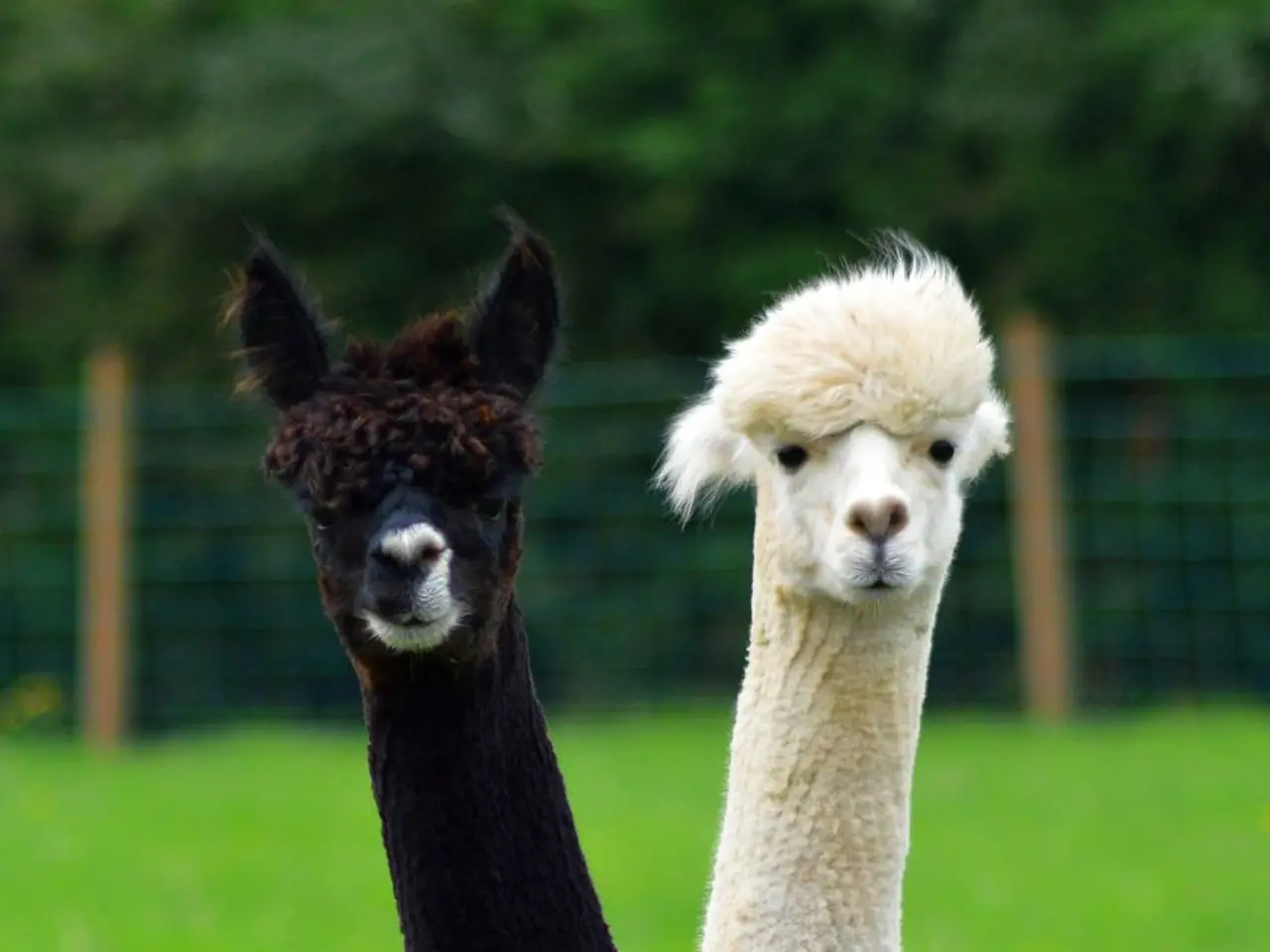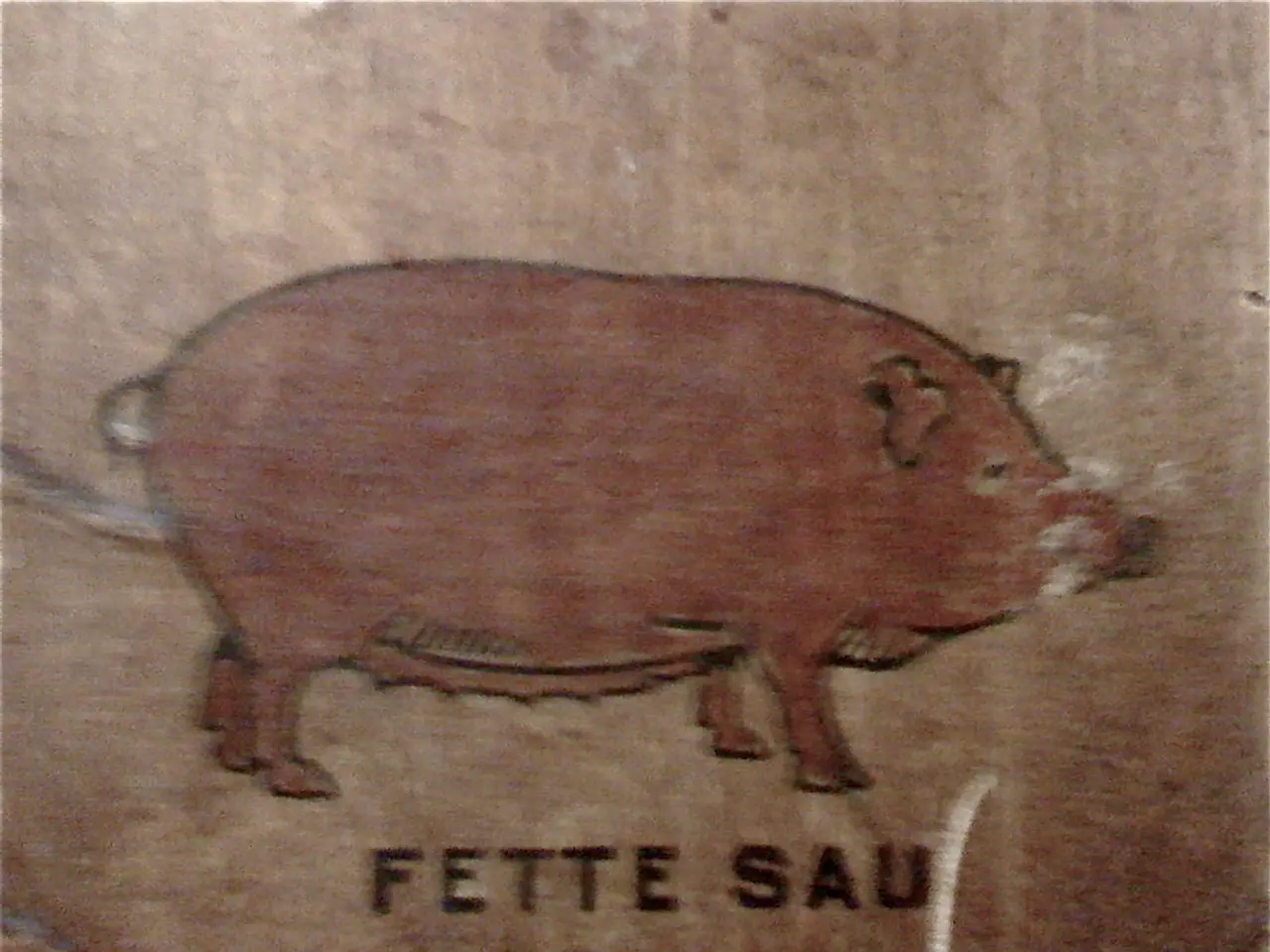Black Creatures of Nature: Significance, Coping Mechanisms, and Variety in the Animal Kingdom
In the realm of nature, the dark colouration of black animals is not merely a matter of aesthetics but a result of a genetic phenomenon known as melanism. This intriguing trait, characterised by an increased development of the dark pigment melanin, can be found in various species, from the Ayam Cemani chicken to the black panther.
Melanism, a condition that leads to a darker or entirely black appearance, is caused by genetic mutations that amplify melanin production. This pigment, responsible for colouring fur, skin, or feathers, plays a crucial role in the survival of many black animals.
In dense forest habitats, such as those inhabited by melanistic leopards and jaguars, also known as black panthers, the dark colouration may provide better camouflage in low-light conditions, aiding in hunting and predator avoidance. Interestingly, melanistic forms are usually rarer than their normally pigmented counterparts, with their frequency in populations shaped by genetics and ecological factors such as habitat type, light conditions, and predator-prey dynamics.
The American black bear, while not always black, has true black variants common in the eastern U.S. and Canada. These bears, like their melanistic counterparts, are highly adaptable, often entering suburban areas in search of food.
Industrial melanism, a result of environmental changes, is another fascinating example of melanism's role in adaptation. The famous case of the peppered moth during the Industrial Revolution serves as a prime illustration, with darker moths benefiting from better camouflage amidst polluted industrial landscapes.
Melanism offers various survival advantages, such as camouflage or heat absorption. For instance, the black widow spider's shiny black body serves as a warning to predators, while the black mamba, a venomous snake native to sub-Saharan Africa, has a jet-black mouth interior, contributing to its fearsome reputation.
Black animals, such as ravens, black panthers, and black bears, are often celebrated for their aesthetic appeal and cultural significance across folklore, science, and art. The common raven, with its jet-black feathers and distinctive croaking call, is both an intelligent and symbolic bird, often featured in mythology and literature as omens or messengers. Black swans, native to Australia, defy the common belief that all swans are white.
One unique case is the Ayam Cemani chicken, an Indonesian breed that is entirely black due to a genetic condition called fibromelanosis. This rare breed is often associated with rituals and mysticism, adding to its allure.
In conclusion, melanism, a natural genetic variation within species, can influence survival by improving concealment, and its frequency in populations is shaped by genetics and ecological factors. It plays an important role in evolution and adaptation, demonstrating the intricate interplay between genetics, environment, and survival in the animal kingdom.
In the broader context of biology, melanin, responsible for the dark coloration of various species such as black swans, Ayam Cemani chickens, and black panthers, is not solely a matter of aesthetics but a factor that influences survival through better camouflage and can also be linked to genetic variations and ecological factors.
The role of melanism extends beyond the animal kingdom, finding its relevance also in the realms of health-and-wellness, as incidental evidence for its study aids in understanding various human genetic conditions. Additionally, lifestyle, fashion-and-beauty industries may find inspiration in the alluring appearance of black animals, symbolizing mystery, power, and elegance.




